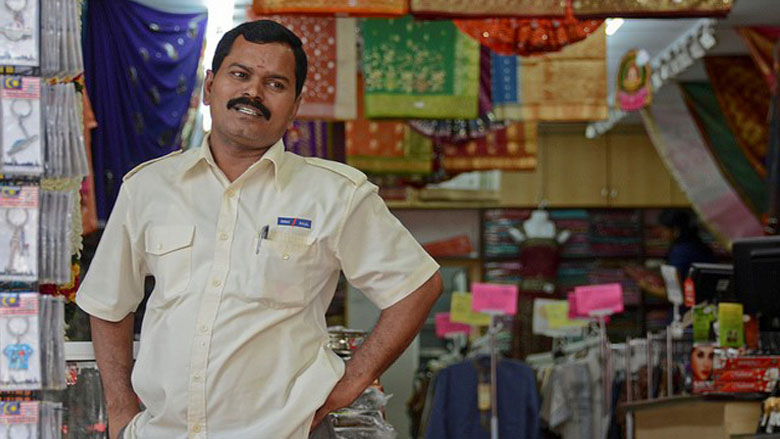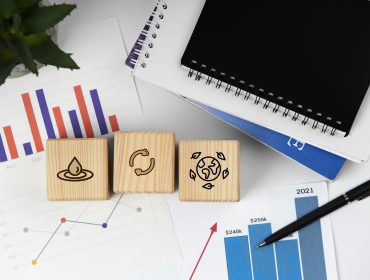
“Small is the New Big” – Malaysian SMEs Help Energize, Drive Economy
STORY HIGHLIGHTS
Small and medium enterprises (SMEs) form the backbone of Malaysia’s economy.
Ninety-seven percent of business establishments in Malaysia are SMEs. These businesses account for 65% of the country’s employment.
Malaysia’s 2012-2020 SME Masterplan seeks to advance SME development and increase their contributions to the economy.
Washington, DC July 5, 2016—Ninety-seven percent of business establishments in Malaysia are small and medium enterprises (SMEs). These businesses are responsible for nearly 36% of the country’s GDP, 65% of the country’s employment, and nearly 18% of Malaysia’s exports.
SMEs have been at the core of Malaysia’s economic transformation since the 1990s to an upper-middle income nation and are an important driver of employment and growth.
“In terms of numbers, SMEs are significant, and they form the backbone of Malaysia’s economy,” said Dato Hafsah Hashim, chief executive of SME Corporation Malaysia at a recent event organized by the new World Bank Group Knowledge and Research Hub in Kuala Lumpur in partnership with the Trade & Competitiveness Global Practice. “To us in Malaysia, small is the new big.”
Hafsah, who is responsible for coordinating and overseeing policies for the overall development of SMEs in Malaysia, helped create and is now implementing the 2012-2020 SME Masterplan. Designed in conjunction with the World Bank Group, and described by Malaysia’s Prime Minister as a “game changer,” the Masterplan includes a structured framework to advance SME development.
By 2020, Malaysia aims to push SMEs’ contribution to GDP to 41%, and the share of the country’s exports from SMEs to 23%.
“Malaysia’s transition to a high-income economy will highly depend on SMEs’ contribution to GDP growth,” said Anabel Gonzalez, Senior Director of the Bank Group’s Trade & Competitiveness Global Practice. “In addition, SMEs have a significant role to play in creating opportunities for women and yout”.
Malaysia’s SME growth has outpaced that of the overall economy, but the country’s target of 8% SME growth through 2020 will be tough to maintain, given that the overall economy is growing only at about 5% annually, according to Hafsah.
“Our overall vision is to have globally competitive SMEs across all sectors that enhance wealth creation and contribute to the social wellbeing,” said Hafsah.
Secondary goals include increasing business formation by 6% on average per year and increasing the number of high growth and innovative firms by 10% per year.

“We want to create employment providers, not employment seekers”.
Dato Hafsah Hashim
Chief executive of SME Corporation Malaysia
The Relevance of Data
An important element to boosting SMEs in Malaysia is understanding them. The surprising results of the country’s first-of-its-kind census in 2004 showed that the vast majority of SMEs were in the services sector, while only about 7% were in the manufacturing sector and even less in agriculture.
“I believe in the principle that what you can’t measure you can’t plan and if you can’t plan you can’t manage,” Hafsah said, referring to the need to survey businesses and understand their subsectors. “The SME policy has evolved over the years in line with the overall country’s development agenda”.
Focus on Innovation
A key element of Malaysia’s Masterplan that has worked thus far is the focus on innovation and technology adaptation. For example, Malaysia targeted the green light-emitting diode (LED) business as a focus for SMEs and has seen huge growth over the years and good international exposure. In 2016, Malaysian firms sold RM116.9 million in LEDs, compared to just RM65.6 million in 2012. Future areas of focus will be medical devices, oil and gas, ship-building and repair, and aerospace. Each sector will receive specific attention for a 12-month period in an effort to kick-start activity in that area.
The TUBE youth development program is another example of innovation, this time meant to spark the entrepreneurial spirit among young Malaysians. Based on a boot camp concept, the program sends participants to a jungle for a week to test their leadership, discipline and teamwork skills. Those who make it through the camp continue on to year-long apprentice training programs.
“This strategy is simple: entrepreneurship is not a 100-meter burst. It is a marathon and needs a lot of energy and a lot of stamina. If they can’t get through one week, we feel they can’t get through the entrepreneurship journey,” said Hafsah, who called the program her ‘pride and joy’. “We want to create employment providers, not employment seeker”.
To ensure continued SME growth and contribution to Malaysia’s economy, over the next few years Hafsah said Malaysia has to encourage the private sector to adapt to changes, have a pool of skilled personnel who can be absorbed in the market and get better at closing the productivity gap to be globally competitive.
“We have achieved a great deal thus far,” explains Hafsah. “But there is a long road ahead for us to become a high-income nation”.
Published by The World Bank
Photo: Trinn Suwannapha / World Bank
Related Post
Equipping SMEs with the skills to...
SMEs and entrepreneurs heavily depend on skills to stay competitive and face greater challenges than larger firms in accessing and retaining...
The future of entrepreneurship with AI
AI-native startups are redefining the nature of entrepreneurship through accelerated scaling. With leaner teams, evolving funding dynamics, ...
Micro and small businesses can act...
In an international context where conflicts have reached their highest level since the Second World War, what role can micro, small, and med...





